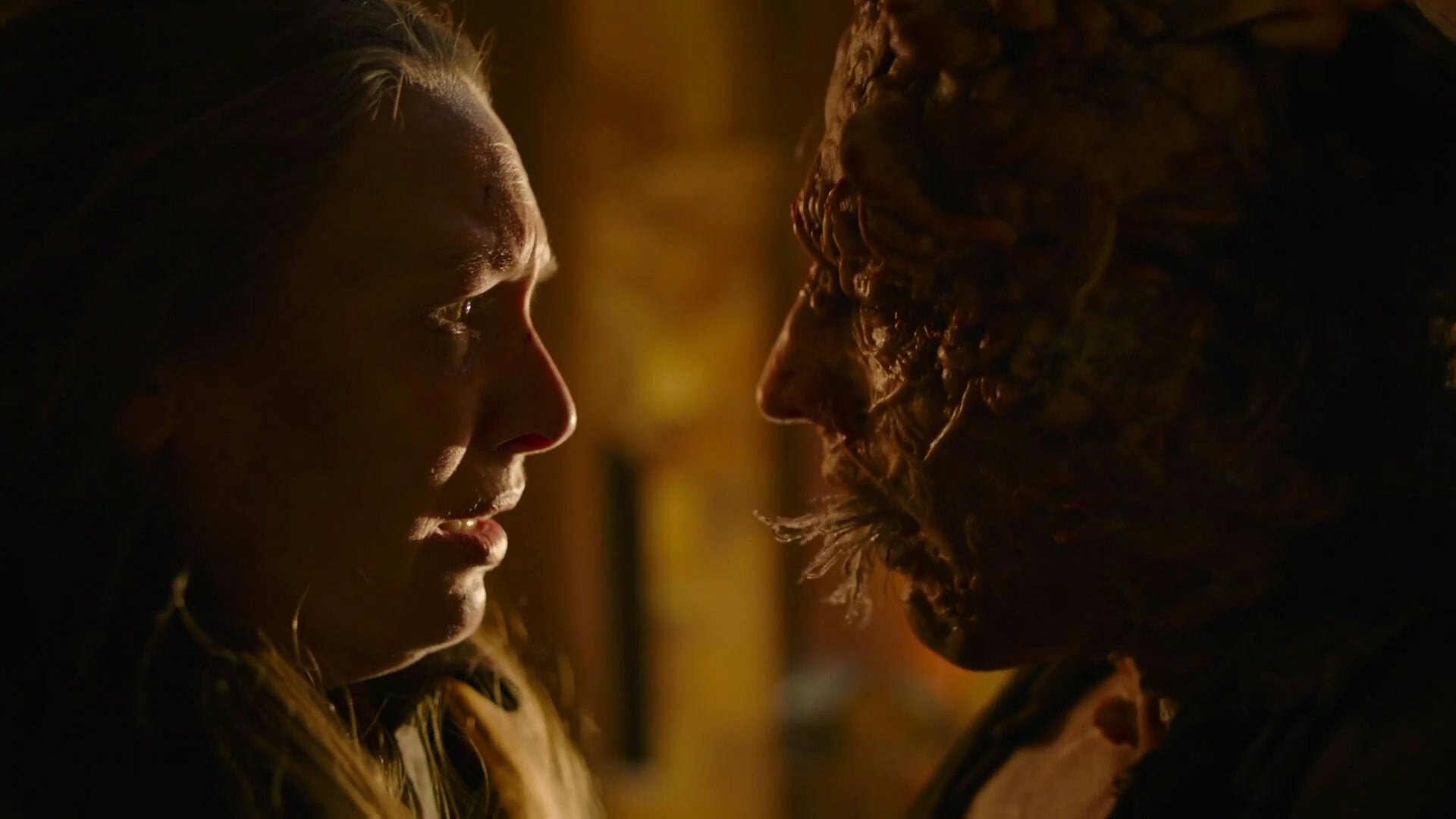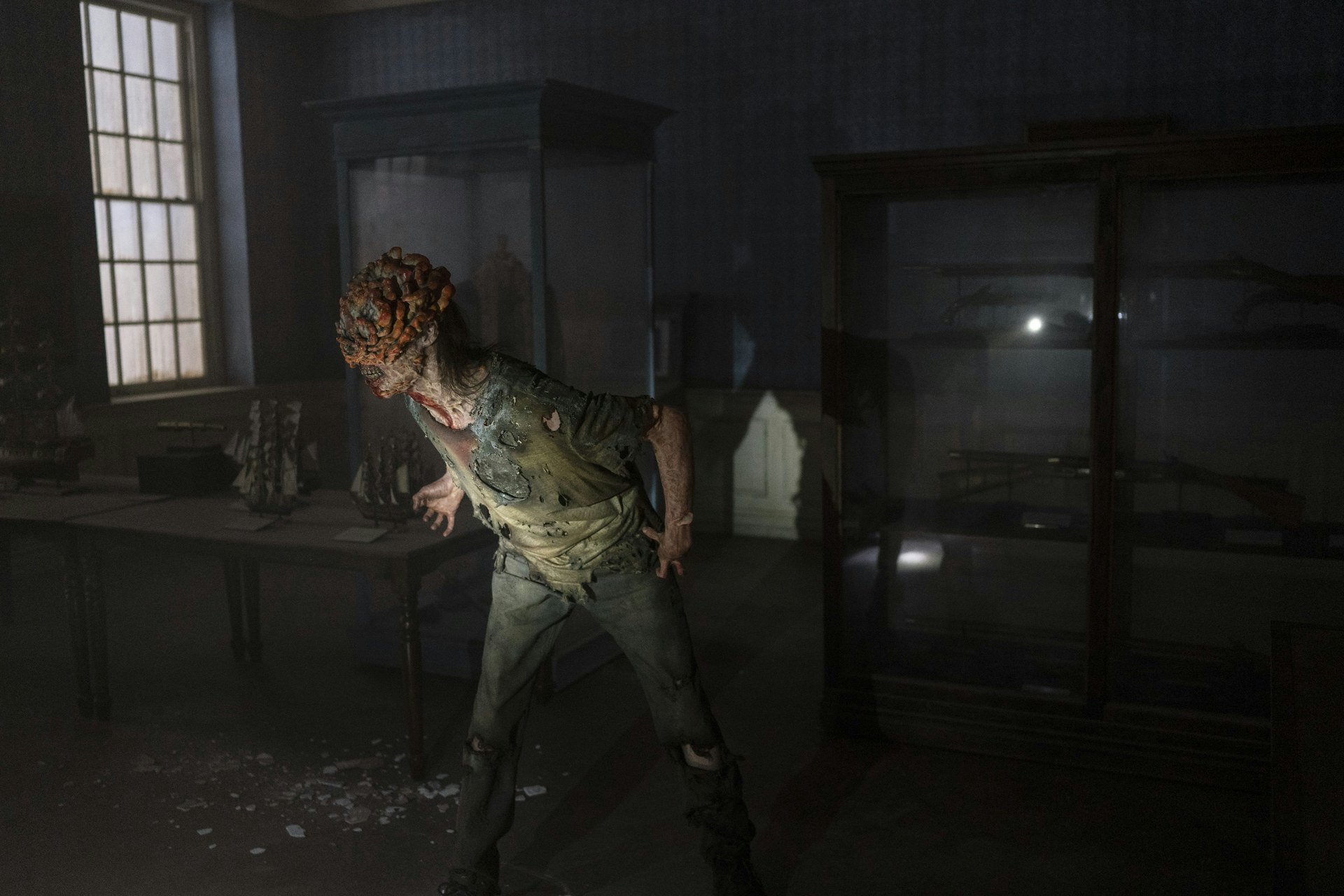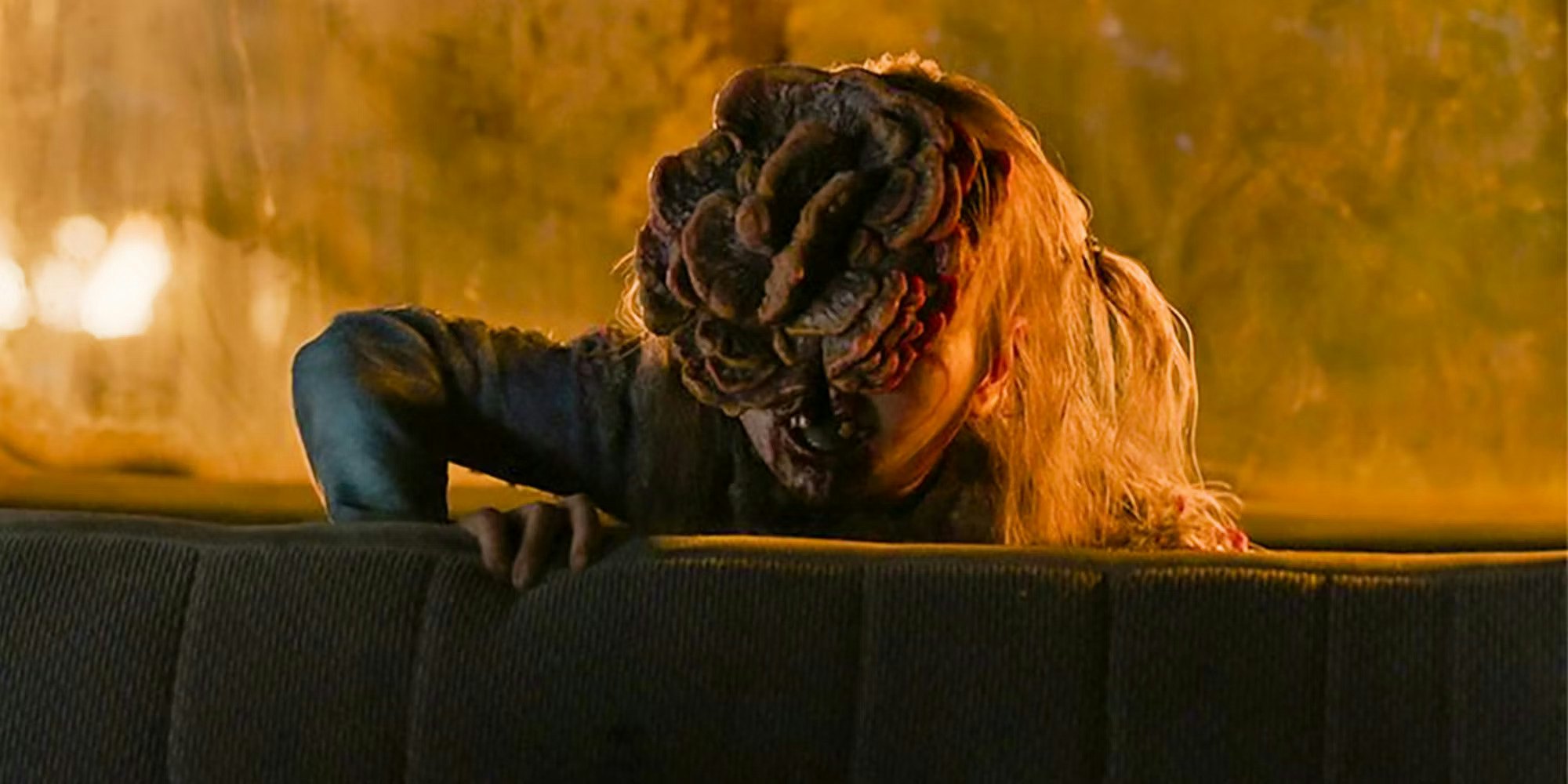
Terry Notary’s work as a movement coach and choreographer is often based on a lot of research. For his motion-capture work on the Planet of the Apes franchise, he watched a lot of nature videos of apes in the wild. For Avatar, he poured himself into the cultural study of tribal cultures to capture how the Na’vi move.
But for HBO’s The Last of Us, research wasn’t as easily found — it’s not like there are many examples of how parasitic mushrooms make people move. So Notary went to the source: psychedelics.
“I tried mushrooms before I did this, to see what it felt like,” Notary tells Inverse. “I felt like ‘Whoa, this isn't making me feel stupid. This is making me feel really intelligent. Holy sh*t. This is otherworldly.’”
“These aren’t mindless creatures. These are expanded, like really aware creatures.”
The experience with psilocybin mushrooms, which has proved medically beneficial in many studies, was also inspirational for Notary.
“It was a big influence on the approach. These aren't mindless creatures. These are expanded, like really aware creatures. I tried the science and learned from it and applied it.”
Notary’s insistence that the Cordyceps have a form of intelligence isn’t his alone. With the addition of the “tendrils,” Infected can communicate as a sort of hivemind spanning miles. Notary’s work just translates this into movement. The Infected in the horde we saw in Episode 5 act like different limbs of an organic mass instead of a scrambling pack of zombies.
In a conversation with Inverse, Notary discusses the secret intelligence of the Infected, working with the Russo Brothers on their new sci-fi movie, and The Last of Us Season 2.
This interview has been edited for clarity and brevity.

How much did the game serve as a source text for your work?
When I got called by Craig [Mazin,] he said, “Have you played the game? We'd love you to work on it.” I never played the game, I don't play games. I don't have time. My son plays games, but I had no idea what it was. So I immediately went to the games on YouTube and they sent me a bunch of reference materials and stuff to watch. So I just started watching people play the game, and I started getting a little idea of what the world was.
I was pretty quick to understand how the world works, but I wanted to make the infected feel like they were of one mind, and so that they were all connected. Cordyceps have this intelligence that was connecting them all together, they weren't all just a bunch of random zombies running around as individuals in America. They had a higher intelligence, they had this way of being powerful in their force of being connected together as one unit, like a school of fish or a big flock of birds, they just kind of move and flock together. That was their sort of intelligence of being able to communicate with one another without words.

That felt dangerous to me, if you have a path that's connected and understanding where they are, that feels scary to me. I pitched that idea to the guys and they really liked it. My wife and I have a dance studio here, and our daughters are really amazing dancers. So I usually have my daughter perform some of these creatures for me, and I can direct her and kind of see where it was going. We can play together and move in and find different rhythms and stuff.
I was workshopping with her and I was finding what really works is the sense of discord. It felt like there was a beauty in it being broken, a fractal-like feeling and fragmented rhythms that felt really scary, but beautiful. At the same time, it was organic, it was almost like watching a plant grow but in fast motion. You could almost see the pieces and the moments of growth and then withering.
“You're not losing anything by becoming infected. You're actually gaining intelligence.”
That was an influence too, nature growing in fast motion and in reverse. Playing things in reverse felt interesting to me as well. It gave it this off-tempo intelligence, rather than like going into two-dimensional stuff. It was really important to get the actors to drop out and be intelligent, to go past themselves and forget.
What I usually do when I'm working with an actor or a new character is we start with chair work. We start to understand how to transcend past this attitude of “This my name, this is what I do, here's my resume.” We work on letting all that superfluous, nonsensical, unimportant stuff dissolve away. We become intelligent.
How do different stages of the infected move?
The more they become infected, the more the two-dimensional self-conscious person starts to become aware and connected to every all the other Infected, so you get more and more transcendence. That just became scary because you're not losing anything by becoming infected. You're actually gaining intelligence. That is, yes, turning you into a flesh-eating creature, but it's also giving you this power of being able to see and forget all of the minutiae.
That was really kind of how I was approaching the whole thing. The more infected they were, the more discord there was in the tempo, and the time and the rhythms of their movement: tricking yourself into moving, and then going with whatever happens.
“That's freaky and powerful, to see a mob of that coming at you.”
Making mistakes is a huge part of it, allowing mistakes to happen. People don't want to make mistakes, but it's all about making mistakes and then going “That's beautiful, I get all that.” When everybody's doing that, and they're all transcendent, and connected, and aware of like, “when this person ebbs I flow with him” and this and that, it felt like the whole group became one modular, gelatinous, mind. It works. It just felt like that's it. That's freaky and powerful, to see a mob of that coming at you.
So I pitched that to the guys, and they really liked that idea, so we ran with it. I showed them [my daughter] Skye's video that we did that shows the sort of moments that could happen and the subtleties: how you rise up to stand, and how you run, walk cycles, how the head would lead and then the body would follow. All these little nuances became the foundational work for the technique that I was going to teach to everybody.

Did you work with Keivon Woodard for Sam’s tragic turn at the end of Episode 5?
I didn’t, but I did work with Skye Belle [Cowton,] who played the child Clicker. She was really cute. She's a little contortionist and a gymnast. We worked for about a week on it. She did great. When she just let go and stop worrying about doing it right, then it just became great.
Of all the characters whose movements you’ve choreographed, which has proven the most difficult?
I just finished a [movie] with the Russo brothers called The Electric State. I played about seven characters in that and a few of those were very, very difficult. They're robots, but they're robots with consciousness. So you have to speak as this flowing, calm, connected person, but move as a robot at the same time. It was like tapping your head and rubbing your belly but it was good once it once I found it. It was really good.
But [Planet of the] Apes is always a good one to go back to because it's just about dropping everything away, dropping all the pretense and the superfluous stuff that doesn't matter. Then you just become the purest form of yourself, and that's a really challenging yet rewarding character.
Season Two of The Last of Us is happening, and there are two more stages of Infected that we haven't seen yet. Would you return to the show?
Yeah, I definitely would. If I was available, and they wanted me back, then it would be yes, definitely. It was such a fun experience working with that whole team. They were an amazing group. We all became one unit. That's for sure. You know, 50 guys, all individuals coming in and going, “What are we gonna do? What are we gonna do” and then suddenly we all become one person.







